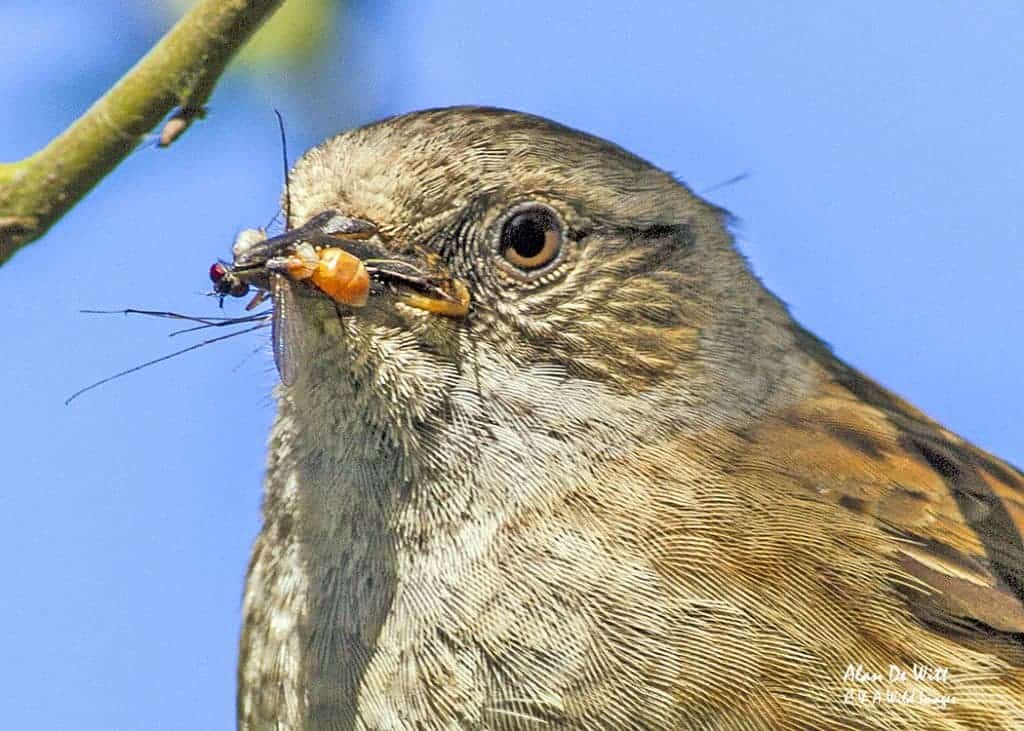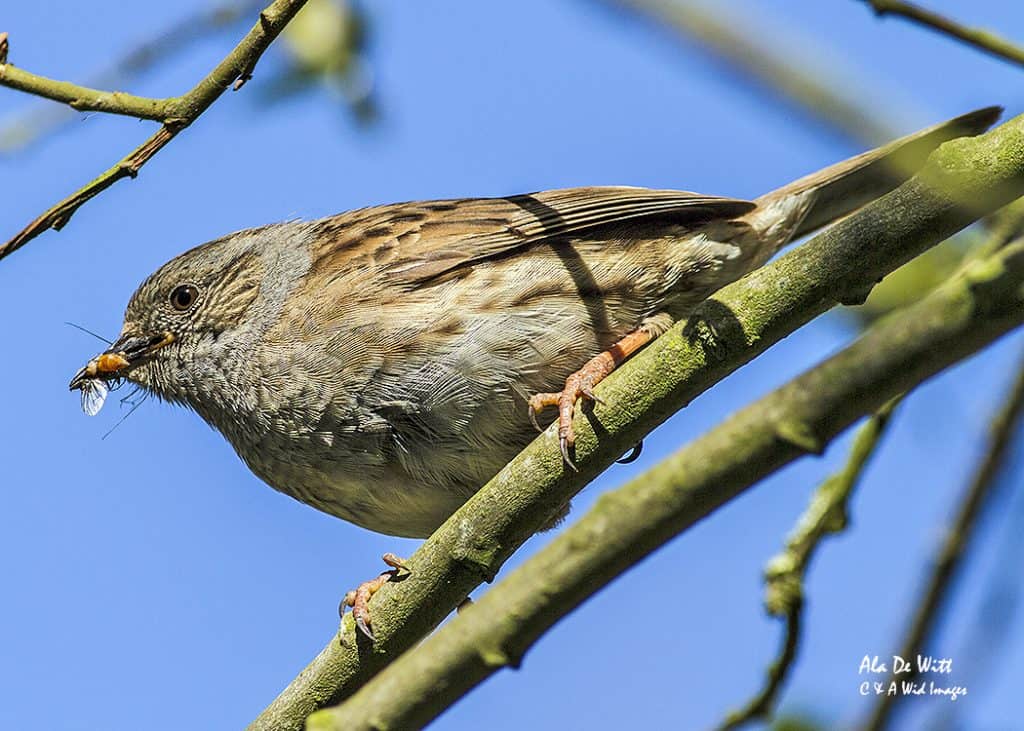There’s an old saying that you never stop learning and that’s never more true than when you start looking at the natural world.
Earlier this year I saw a Dunnock busily collecting insects for its chicks. In the UK it’s a bird often seen in the garden and is known for its secretive behavior of lurking underneath the hedge, looking quite boring.
Surprisingly, it’s on the Amber List of birds of the British Isles, due to a decline in numbers during the 1980’s. I am pleased to say that over the last few years its numbers are now recovering.

The Dunnock or Hedge sparrow doesn’t attract much attention for its looks. But what it lacks in looks it make up for with its riotous sex life.
THE DUNNOCKS’ RIOTOUS SEX LIFE
Both the male and females are territorial and their prime aim in life as is the case with all wildlife is to make sure their genes are passed on. To enable them to do this Dunnocks have adapted a number of different breeding strategies which are quite rare among birds. Much of their choice of strategy seems to depend on the size of their territory and the ratio of male and females.

Some do practice monogamy this is usually when only one female and one male’s territory overlap. However, most of the time Dunnocks are either polyandrous, with females mating with two males, with the aim of getting both males to help in the feeding of the chicks. Or polygynous, with the males mating with more than one female.
These different strategies often lead to the male, prior to mating, pecking the female’s rear end to encourage her to eject a rival’s sperm.
Other Dunnocks adopt polygynandry, which could mean,females mating with 2-3 males, and males mating with 2-3 females. A strategy which could result in a female laying a nest of eggs sired by a number of different males, in the hope that all the males will help to feed the chicks.
Amazingly, it’s all going on in our garden hedges by these seemingly plain little brown birds.
Alan De Witt
After spending a career that demanded much of my time and energy. I'm now retired and finally found some time to pursue an interest in wildlife and photography as well as putting together a website C & A's Wild Images.
I now live in Norfolk, an ideal location in the UK to see wildlife and over the years have also had the opportunity to visit and spend time using the camera in interesting and sometimes remote parts of the world. I first became interested in trying to capture wildlife images when I left university in the days of slide film. Initially I used two compact cameras with 20+ zooms but now have moved to a professional Canon SLR set-up.


Leave a Reply